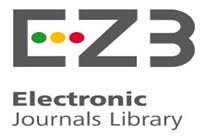IJSEA Archive (Volume 4, Issue 5)
International Journal of Science and Engineering Applications (IJSEA) (Volume 4, Issue 5 September-October 2015)
Acaricidal Activity of Ethulia conyzoides Extracts and Constituents against Tetranychus urticae Koch
A. Mahmoud Dawidar, M. Abdel-Mogib, M. El Saied. El-Naggar, M. El-Hoseiny Mostafa

Keywords:Acaricidal activity, Tetranychus urticae Koch, Ethulia conyzoides, 3-O-acetyl lupane, lupan-3-ol, ethuliacoumarin, 7-O-methyl apigenin, isoethyliacoumarin A and isoethuliacoumarin C.
The acaricidal potential of Ethulia conyzoides L. aerial parts extracts as well as its isolated compounds were investigated against larvae and adults of Tetranychus urticae Koch under laboratory conditions. Chromatographic separation of the extracts gave 3-O-acetyl lupeol, lupan-3-ol, ethuliacoumarin (1) and 7-O-methyl apigenin (Genkwanin), besides a mixture of isoethyliacoumarin A (2), isoethuliacoumarin C (3). The biological evaluation results indicated that ethyl acetate fraction and ethuliacoumarin (1) were the most potent to larvae and adults of Tetranychus urticae. The LC50 values of ethyl acetate fraction were found to be 11.58 and 17.86 ppm, respectively and LC50 values of (1) were found to be 12.72 and 19.22 ppm, respectively after 7 days of treatment.
[1]Dawidar, A. M., Abdel-Mogib, M., El-Naggar, M. E., Mostafa, M. E. (2014). Isolation and Characterization of Polygonum equisetiforme Flavonoids and Their Acaricidal Activity against Tetranychus urticae Koch. Research Journal of Pharmaceutical, Biological and Chemical Sciences vol. 5, issue (4), pp 140-148.
[2] Tehri, K., Singh, N. (2015). The role of botanicals as green pesticides in integrated mosquito management – A review. International Journal of Mosquito Research vol. 2, issue (1), pp 18-23.
[3] Koul, O., Walial, S., Dhaliwal, G. S., (2008). Essential Oils as Green Pesticides: Potential and Constraints. Biopestic. Int. vol. 4, issue (1), pp 63–84.
[4] Kady, M. M., Brimer, L., Furu, P., Lemmich, E., Nielsen, M. H., Thiilborg, S. T., Thastrup, O., Christensen, B. S. (1992). The Molluscicidal Activity of Coumarins from Ethulia conyzoides and of Dicumarol. Planta Med. vol. 58, pp 334-337.
[5] El-Bassuony, A. A. (2009). Antibacterial Activity of Two New Monoterpene Coumarins from Ethulia Conyzoides. Journal of Pharmacy Research vol. 2, issue (4), pp 582-584.
[6] Aliyu, A. B., Ibrahim, M. A., Ibrahim, H., Musa, A. M., Lawal, A. Y., Oshanimi, J. A., Usman, M., Abdulkadir, I. E., Oyewale, A. O., Amupitan, J. O. (2012). Free radical scavenging and total antioxidant capacity of methanol extract of Ethulia conyzoides growing in Nigeria. Romanian Biotechnological Letters vol. 17, issue (4), pp 7458- 7465.
[7] Noumia, E., Houngue, F., Lontsi, D. (1999). Traditional medicines in primary health care: plants used for the treatment of hypertension in Bafia, Cameroon. Fitoterapia vol. 70, pp 134-139.
[8] Baldaa, S. I.; Halim, A. F.; Halaweish, F. T. and Bohlmann, F. (1980). New 5- methylcoumarin Derivatives from Ethulia conyzoides, Phytochemistry, vol. 19, pp 1519-1522.
[9] Mahmoud, A. A., Ahmed, A. A., Ilnuma, M., Tanaka, T. (1998). Further Monoterpene 5-methylcoumarins and an Acetophenone Derivative from Ethulia conyzoides. Phytochemistry vol. 48 issue (3), pp 543 546.
[10] Shukla, V. S., Dutta, S. C., Baruah, R. N., Sharma, R. P., Thyagarajan, G., Herz, W., Kumar, N., Watanabe, K., Blount, J. F. (1982). New 5-methylcoumarins from Ethulia conyzoides. Phyrochemistry vol. 21 issue (7), pp 1725-1731.
[11] Bohlmann, F., Balbaa, S., halim, A., Halawelsh, F. A., (1981). Terpene-Coumarin Derivative from Ethulia conyzoides. Phytochemistry vol. 20, pp 177.
[12] Mahmoud, A. A., Ahmed, A. A., linuma, M., Tanaka, T., Muraoka, O. (1994). Structure of a Novel Spiro-monoterpene-coumarin in Ethulia conyzoides. Tetrahedron Letters vol. 35 issue (35), pp 6517-6520.
[13] Mahmoud, Z. F., Sarg, T. M., Amer, M. E., Khafagy, S. M. (1983). Anthelmintic coumarin from Ethulia conyzoides var. gracilis Asch. & Schweinf. Pharmazie vol. 38 issue (7), pp 486-487.
[14] Balbaa, S. I., Halim, A. F., Halaweish, F. T. (1981). Constituents of the Aerial Parts of Ethulia conyzoides. Fitoterapia vol. 52 issue (2), pp 75-76.
[15] Mahmoud, Z. F., Sarg, T. M., Amer, M. E., Khafagy, S. M., Bohlmann, F. (1980). A 5-methylcoumarin Glucoside from Ethulia conyzoides. Phytochemistry vol. 19 pp 2029-2030.
[16] Gazal, S.A., Abuzarqa, M., Mahasneh, A.M. (1992). Phytother. Res. vol. 6, pp 265-269.
[17] Abbott, W.S. (1925). J Econ Entomol. vol. 18, pp 625-627.
[18] Finney, D.J. (1971). Probit Analysis. A Statistical treatment of the sigmoid Response curve. 7th Ed. Cambridge Univ. Press, Cambridge, England.
[19] Sun, Y.P. (1950). J Econ Entomol. vol. 43, pp 45-53.
[20] Jamal, A.K., Yaacob, W.A., Din, L. B. A. (2008). Chemical Study on Phyllanthus reticulatus. Journal of Physical Science vol. 19 issue (2), pp 45–50.
[21] Chuan-Rui, Z., Aldosari, S. A., Vidyasagar, P. S. P. V., Nair, K. M., Nair, M. G., (2013). Antioxidant and Anti-inflammatory Assays Confirm Bioactive Compounds in Ajwa Date Fruit, J. Agric. Food Chem. vol. 61, pp 5834−5840.
[22] Isaev, I. M., Agzamova, M. A., Isaev, M. I. (2011). Genkwanin and iridoid glycosides from Leonurus turkestanicus. Chemistry of Natural Compounds vol. 47, issue (1), pp 132-134.
@article{Mahmoud04051018,
title = " Acaricidal Activity of Ethulia conyzoides Extracts and Constituents against Tetranychus urticae Koch ",
journal = "International Journal of Science and Engineering Applications (IJSEA)",
volume = "4",
number = "5",
pages = "335-340 ",
year = "2015",
author = " A. Mahmoud Dawidar, M. Abdel-Mogib, M. El Saied. El-Naggar, M. El-Hoseiny Mostafa ",
}









